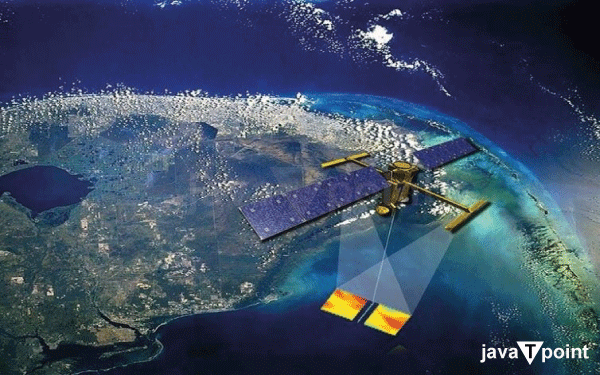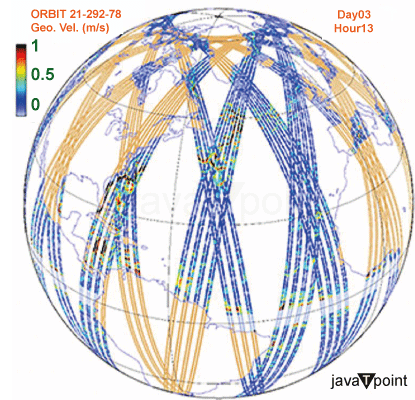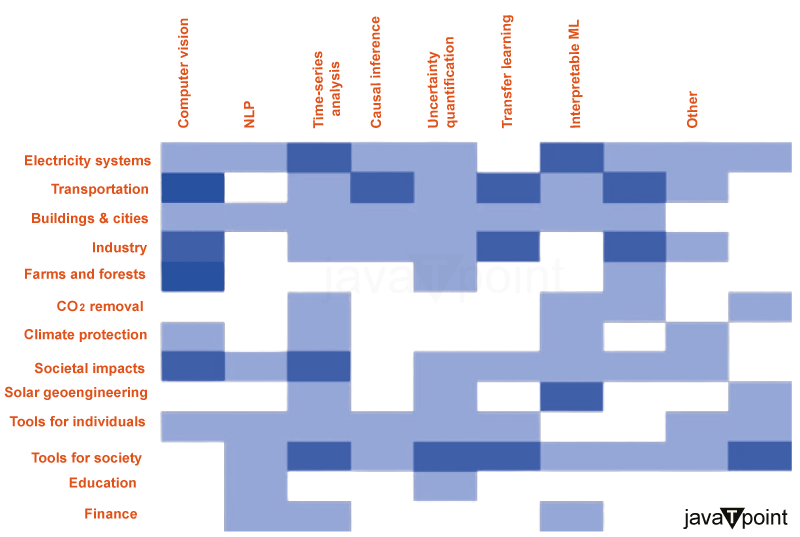Machine learning and climate changeThe application of machine learning could prove crucial in the ongoing fight against climate change.Dealing with emissions efficiently is a high-potential environmental mitigation method. When we can't totally remove emissions, decreasing their environmental impact is generally the best option. Researchers have utilised artificial intelligence to discover the best strategies for converting gases into methane, for example. They enabled the technology to explore characteristics such as the size and chemical composition of the catalyst small particles which govern the process. PreventionMethane, a renewable energy source, is a convenient option for storage and transfer. Scientists are using machine learning to analyze the unique patterns produced by catalysts during chemical processes. Early investigations have shown that specific catalysts can either lower the temperature or enhance the efficiency of the carbon dioxide-methane process. 
While many people worldwide perceive climate change as a distant concern, African farmers are already experiencing its unfortunate effects. More than 95% of them rely entirely on rainfall for irrigation, and the resulting droughts caused by climate change are leading to disastrous agricultural losses. Research indicates that the majority of global greenhouse gas emissions are attributed to energy generation and consumption. Recognizing this, numerous international leaders are taking action and committing to meaningful improvements within specified timeframes. Mexico stands out as a country that has recently made significant progress in this regard. However, achieving such goals necessitates collaboration on an international scale. Implementing widespread changes in energy production and consumption to promote environmental well-being requires careful planning and time. However, individuals can also contribute by taking steps in the right direction. Various technology companies offer machine learning tools that help reduce energy usage at the building level. One particular company claims to have developed systems capable of collecting data samples at an astounding rate of 8,000 instances per second, resulting in potential energy savings of up to 50%. Users can readily access concrete data supporting the success of these solutions through user-friendly interfaces that display consumption trends and other vital statistics. Furthermore, customers can gain fresh insights, such as identifying peak energy usage hours or determining which specific areas significantly contribute to the overall energy consumption. InnovationScientists have discovered that plants have the ability to naturally absorb carbon dioxide, which can help reduce pollution. However, they have not fully understood the long-term effects of this process and how it can impact plant life, such as promoting growth. 
To delve deeper into this phenomenon, a team of experts from different fields conducted a comprehensive study using machine learning, statistical methods, and satellite data. Their goal was to better understand how soil nutrients and climate factors affect a plant's capacity to absorb carbon dioxide. The results revealed that tropical forests, like those in the Amazon and Congo, have the highest potential for both carbon dioxide absorption and regeneration of plant life. Another significant finding from the study was that by the year 2100, trees could potentially remove an amount of carbon dioxide equivalent to six years of emissions. However, this optimistic outcome could only be achieved if deforestation efforts were completely halted. Machine learning could play a role in helping climate advocates persuade policymakers about the importance of trees in combating global warming. Undoubtedly, climate change is a critical and substantial issue. These examples highlight how machine learning can contribute to addressing this challenge. While innovative technology cannot replace human knowledge and decision-making, it can complement and support real systemic changes in meaningful ways. Improve our forecasts of how much energy we will useo successfully integrate more renewable energy sources, utility companies need to improve their techniques for accurately estimating current and future power demands. While there are already algorithms for forecasting energy demand, they can be further improved by incorporating more detailed local climate and weather trends, as well as taking into account individual household behaviors. Additionally, efforts to enhance the transparency and comprehensibility of these algorithms can assist utility operators in interpreting the findings and making informed decisions about when to integrate renewable energy into the grid. Learn about new materialsScientists are faced with the challenge of finding materials that can store, gather, and utilize energy more efficiently. However, the traditional process of discovering new materials is often time-consuming and unreliable. Machine learning offers a promising solution by speeding up the identification, development, and evaluation of novel chemical compounds that possess the desired properties. This advancement could have significant implications, such as the development of solar fuels that can capture and store energy from sunlight. Additionally, machine learning can help identify more effective absorbents for carbon dioxide or alternative building materials that require much lower carbon emissions compared to conventional options like steel and cement. Given that steel and cement production contributes nearly 10% of global greenhouse gas emissions, these innovative materials have the potential to play a crucial role in reducing environmental impact. Improve the way freight is routedThe process of shipping products worldwide is a complex and often inefficient operation, involving the coordination of different cargo sizes, modes of transportation, and a dynamic network of origins and destinations. Machine learning can potentially assist in finding ways to optimize cargo grouping, aiming to minimize the total number of trips required. 
By efficiently grouping cargoes, this approach can lead to reduced transportation needs and, consequently, lower costs. Additionally, such a system would be less vulnerable to transit delays and disruptions, resulting in improved reliability and customer satisfaction. Overcoming hurdles in electric vehicle adoption:Overcoming the hurdles in electric vehicle adoption requires concerted efforts, and machine learning can play a vital role in this transformation. By leveraging advanced algorithms, machine learning can optimize battery energy management, extending the mileage per charge and alleviating concerns associated with "range anxiety." These algorithms can intelligently model and forecast aggregate charging behavior, empowering grid operators to efficiently manage and meet the dynamic load demands of electric vehicles. Enhancing building energy efficiency:Moreover, machine learning algorithms can revolutionize building energy efficiency by implementing intelligent control systems. These systems leverage real-time data, including weather forecasts, occupancy patterns, and environmental factors, to dynamically adjust heating, cooling, ventilation, and lighting requirements. 
By adapting to these factors, energy consumption is optimized, resulting in significant reductions in carbon emissions. Furthermore, these intelligent control systems can interact with the electrical infrastructure, proactively managing energy usage during periods of low-carbon availability, thereby ensuring sustainable energy practices. Improving energy consumption estimates:In regions where energy consumption data is limited, machine learning algorithms can extract valuable insights from satellite images, leveraging computer vision techniques to identify and analyze building footprints and attributes. These algorithms can then estimate and predict city-level energy usage, aiding policymakers and urban planners in formulating efficient energy strategies and identifying areas for targeted energy-saving initiatives. Optimizing supply chains:The optimization of supply chains is another area where machine learning can have a substantial impact. By leveraging data-driven algorithms, machine learning can enable accurate supply and demand forecasting, minimizing manufacturing and transportation waste in sectors such as food, fashion, and consumer goods. The intelligent allocation of resources and the provision of targeted recommendations for low-carbon products can drive sustainable consumption habits, thereby reducing the overall carbon footprint. Enabling large-scale precision agriculture:In agriculture, machine learning-powered robots hold immense potential for enabling large-scale precision farming. These robots, guided by sophisticated algorithms, can optimize crop management, taking into account factors such as soil health, weather patterns, and historical data. 
By ensuring the optimal mix of crops and minimizing reliance on nitrogen-based fertilizers, the overall environmental impact is reduced, leading to enhanced soil health and decreased greenhouse gas emissions. Enhancing deforestation monitoring:Deforestation, a major contributor to global greenhouse gas emissions, necessitates efficient monitoring and mitigation efforts. Machine learning, coupled with satellite imagery, can automate the analysis of forest cover loss, enabling the detection of illegal deforestation activities on a larger scale. Additionally, ground-based detectors and advanced algorithms can identify chainsaw noises, empowering local authorities to intervene promptly and effectively. Influencing consumer behavior:Finally, machine learning can influence consumer behavior by utilizing techniques deployed by advertisers to target customers effectively. Through personalized interventions and tailored recommendations, consumers can be encouraged to adopt energy-saving practices, participate in sustainable initiatives, and make eco-friendly choices, ultimately contributing to a more sustainable future. Conclusion:In conclusion, the integration of machine learning in addressing the hurdles of electric vehicle adoption, improving building energy efficiency, estimating energy consumption, optimizing supply chains, enabling precision agriculture, enhancing deforestation monitoring, and influencing consumer behavior offers immense potential for mitigating climate change. 
By collaborating across industries, investing in research and development, and embracing the power of machine learning, we can collectively drive meaningful change and accelerate the transition towards a sustainable and low-carbon future.
Next TopicThe Green Tech Revolution
|
 For Videos Join Our Youtube Channel: Join Now
For Videos Join Our Youtube Channel: Join Now
Feedback
- Send your Feedback to [email protected]
Help Others, Please Share









